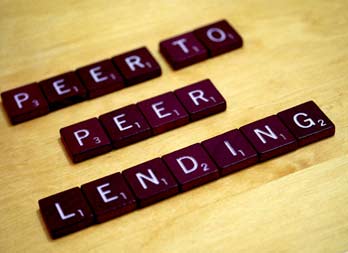Why Now Is A Good Time To Engage In Peer-To-Peer Lending
The current low interest rate environment globally has pushed the majority of fixed income securities to record-low yield levels across the board. This, in turn, makes investing in fixed income investment product no longer worthwhile for return-hungry investors. However, putting almost all your money into equities instead exposes you to substantially more market risk, as equities are riskier than bonds. And while equity markets have been performing well this year, there are numerous potential risk factors that could cause a sharp correction in the equity markets, such as the U.S. election, sluggish global economic growth and the future of Europe given the ‘Brexit’ situation.
Therefore, the smart alternative to leaving your money in traditional fixed income securities or switching aggressively into equities is to invest in peer-to-peer loans instead. Peer-to-peer loans are loans granted to businesses and individuals by several private investors through the use of an online peer-to-peer lending platform. This enables financing for SMEs that are struggling to secure funding from a bank. Conversely, individuals who lend through peer-to-peer platforms are able to generate good fixed interest returns in an asset class that has a low correlation to stocks and bonds.
 From an investor’s point of view, the way peer-to-peer lending works is fairly straightforward. You decide how much of your capital you would like to invest in peer-to-peer loans. Then you sign up to one of the various online peer-to-peer lending platforms, such as Lending Club, Funding Circle or Prosper, and browse through each of the listed peer-to-peer lending investment options. Once you have found loans that offer the right risk-return profile, given your risk preference, you invest. When you have made your investments and lent your funds to the borrowers, all repayments will be handled by the peer-to-peer lending platform.
From an investor’s point of view, the way peer-to-peer lending works is fairly straightforward. You decide how much of your capital you would like to invest in peer-to-peer loans. Then you sign up to one of the various online peer-to-peer lending platforms, such as Lending Club, Funding Circle or Prosper, and browse through each of the listed peer-to-peer lending investment options. Once you have found loans that offer the right risk-return profile, given your risk preference, you invest. When you have made your investments and lent your funds to the borrowers, all repayments will be handled by the peer-to-peer lending platform.
Interest rates on peer-to-peer loans can vary greatly and depend on the creditworthiness of the borrower. If you are willing to take the risk you can gain up to 15%+ return on your peer-to-peer loan investments. However, if you do decide to lend to high yielding borrowers you need to be comfortable with a higher potential default risk of the borrowers. Therefore, when investing in peer-to-peer loans, it is always best to diversify by investing in several different loans to reduce single party risk. The best way to go about it is to place funds into a few lower risk and a few higher risk borrowers to get a diversified peer-to-peer loan portfolio with strong average annual returns.
The main benefit of investing through peer-to-peer lending platforms, as opposed to investing in traditional fixed income securities such as government bonds, corporate bonds, and bond funds, is that peer-to-peer loans have a low correlation with stocks and bonds, which make them a great diversifier for your investment portfolio. This will come in especially handy in the current volatile state of the financial markets. Furthermore, peer-to-peer loans actually have a low historical default rate, as borrowers face a strict credit assessment before they are able to list their loan on peer-to-peer lending marketplaces. This, in turn, actually makes peer-to-peer lending a relatively safe investment, provided you lend primarily to high-quality borrowers.
As an investor, not only will you generate higher returns on your peer-to-peer loan investments than you would for holding government bonds, corporate bonds or putting your money into a bond fund. You will also generate returns that are uncorrelated to the institutional fixed income markets and the equity markets. This makes peer-to-peer lending the ideal fixed income asset class to place your funds into in the current low interest rate environment.
